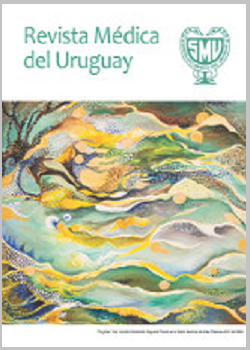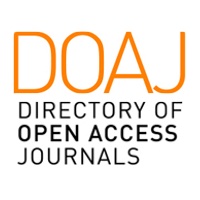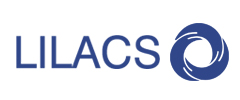Laparoscopic simulation in the training of a general surgeon
Review and initial experience
Abstract
Simulation arises as a fundamental tool within the paradigm shift in the current teaching of surgery. It is based on modern educational theories, patient safety and, in the case of laparoscopy the inherent difficulties of the technique. The main objective is to transfer the training in motor skills outside the operating room, to the simulation laboratory. For this purpose, there are several simulation models, like box trainers -among others- , which despite its low fidelity, adds several advantages in relation to its cost, availability and reuse. This study presents a descriptive review of the subject, including the different models and training methods, evaluation strategies, as well as our initial experience in the Surgical Clinic 2 of the Maciel Hospital.
References
(1) Carter BN. The fruition of Halsted's concept of surgical training. Surgery 1952; 32:518-27.
(2) Fitts PM, Posner MI. Human performance. Belmont, CA: Brooks/Cole, 1967.
(3) Kohn LT, Corrigan JM, Donaldson MS, eds. To err is human: building a safer heath system. Washington, DC: National Academy Press; 1999.
(4) Peters JH, Fried GM, Swanstrom LL, Soper NJ, Sillin LF, Schirmer B, et al. Development and validation of a comprehensive program of education and assessment of the basic fundamentals of laparoscopic surgery. Surgery 2004; 135:21-7.
(5) Wanzel KR, Hamstra SJ, Caminiti MF, Anastakis DJ, Grober ED, Reznick RK. Visual-spatial ability correlates with effciency of hand motion and successful surgical performance. Surgery 2003; 134:750-7.
(6) Reznick R, MacRae H. Teaching surgical skills-changes in the wind. N Engl J Med 2006; 355:2664-9
(7) Varas J, Mejía R, Riquelme A, Maluenda F, Buckel E, Salinas J, et al. Significant transfer of surgical skills obtained with an advanced laparoscopic training program to a laparoscopic jejunojejunostomy in a live porcine model: feasibility of learning advanced laparoscopy in a general surgery residency. Surg Endosc 2012; 26:3486-94.
(8) McGaghie WC, Issenberg SB. Simulation in professional competence assessment: basic considerations. In: Tekian A, McGuire CH, McGaghie WC, eds. Innovative simulations for assessing professional competence. Chicago: University of Illinois at Chicago, Department of Medical Education, 1999:7-22.
(9) Bholat OS, Haluck RS, Murray WB, Gorman PJ, Krummel TM. Tactile feedback is present during minimally invasive surgery. J Am Coll Surg 1999; 189:349-55.
(10) Rosser JC, Davis BR, Qureshi HN. Intracorporeal suturing: the top gun experience. In: Fischer JE, Bland KI, eds. Mastery of surgery. 5th ed. Philadelphia (PA): Lippincott, Williams & Wilkins; 2007:2592 v.2.
(11) Scott DJ, Bergen PC, Rege RV, Laycock R, Tesfay ST, Valentine RJ, et al. Laparoscopic training on bench models: better and more cost effective than operating room experience? J Am Coll Surg 2000; 191(3):272-83.
(12) Derossis AM, Fried GM, Swanstrom LL, Sigman HH, Barkun JS, Meakins JL. Development of a model for training and evaluation of laparoscopic skills. Am J Surg 1998; 175(6):482-7.
(13) Peters JH, Fried GM, Abrahamowicz M, Soper NJ, Sillins LF, Schirmer B, et al. Development and validation of a comprehensive program of education and assessment of the basic fundamentals of laparoscopic surgery. Surgery 2004; 135(1):21-7.
(14) Soper NJ, Fried GM. The fundamentals of laparoscopic surgery: its time has come. Bull Am Coll Surg 2008; 93(9):30-2.
(15) Hirsch ED. The core knowledge curriculum-what's behind its success? Educ Leadership 1993; 50:23-5.
(16) Kolozsvari N, Feldman L, Vassiliou M, Demyttenaere S, Hoover M. Sim one, do one, teach one: considerations in designing training curricula for surgical simulation. J Surg Educ 2011; 68:421-7.
(17) Mackay S, Morgan P, Datta V, Chang A, Darzi A. Practice distribution in procedural skills training: a randomized controlled trial. Surg Endosc 2002; 16:957-61.
(18) Baldwin PJ, Paisley AM, Brown SP. Consultant surgeons' opinion of the skills required of basic surgical trainees. Br J Surg 1999; 86:1078-82.
(19) Aggarwal R, Grantcharov TP, Darzi A. Framework for systematic training and assessment of technical skills. J Am Coll Surg 2007; 204:697-705.
(20) Wanzel KR, Ward M, Reznick RK. Teaching the surgical craft: from selection to certification. Curr Probl Surg 2002; 39:573-659.
(21) Martin JA, Regehr G, Reznick R, MacRae H, Murnaghan J, Hutchison C, et al. Objective structured assessment of technical skill (OSATS) for surgical residents. Br J Surg 1997; 84:273-8.
(22) Corvetto MA, Bravo MP, Montaña RA, Altermatt FR, Delfino AE. Inserción de la simulación clínica en el currículum de Anestesiología en un hospital universitario. Evaluación de la aceptabilidad de los participantes. Rev Esp Anestesiol Reanim 2013; 60:320-6.
(23) Stefanidis D, Sevdalis N, Paige J, Zevin B, Aggarwal R, Grantcharov T, et al. Simulation in surgery: what's needed next? Ann Surg 2015; 261(5):846-53.
(24) Hull L, Arora S, Symons NR, Jalil R, Darzi A, Vincent C, et al. Training faculty in nontechnical skill assessment: national guidelines on program requirements. Ann Surg 2013; 258:370-5.
(25) Sroka G, Feldman LS, Vassiliou MC, Kaneva PA, Fayez R, Fried GM. Fundamentals of laparoscopic surgery simulator training to proficiency improves laparoscopic performance in the operating room-a randomized controlled trial. Am J Surg 2010; 119:115-20.













